📋 Environmental Science: Essential Concepts for Reading Comprehension
Environmental science is an interdisciplinary field that examines the interactions between humans and the environment, addressing issues like resource use, biodiversity loss, and climate change. By combining elements of biology, chemistry, geography, and social sciences, it offers solutions for sustainability and conservation. RC passages on environmental science often explore global challenges, the role of human activity, and strategies for environmental protection. Mastering these concepts equips readers to critically analyze pressing ecological issues.
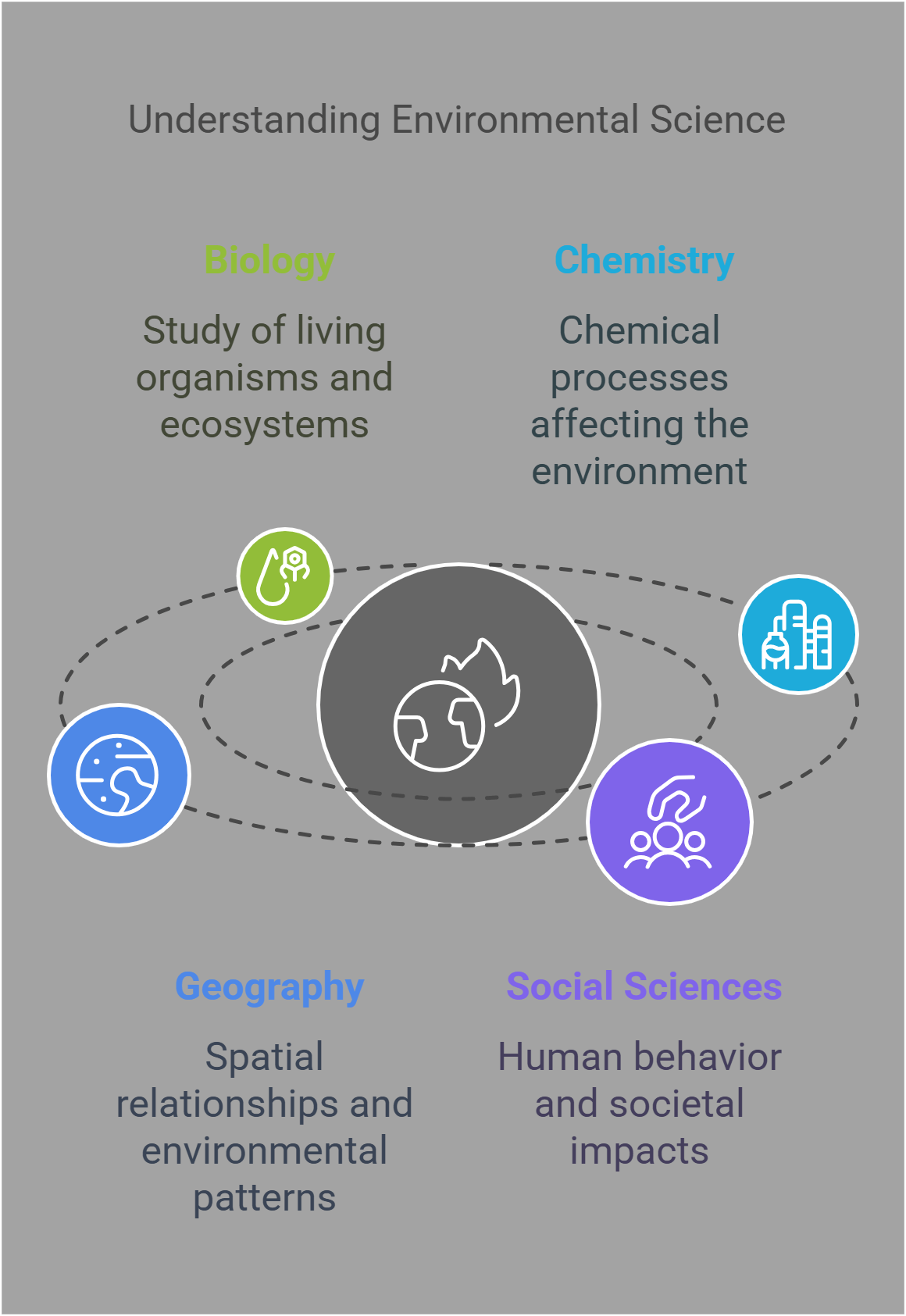
🔑 Key Concepts
This guide explores the following essential environmental science concepts:
- Ecosystem Services
- Biodiversity
- Carbon Footprint
- Renewable vs. Non-Renewable Resources
- Climate Change Adaptation
- Sustainable Development
- Deforestation
- Wetland Conservation
- Marine Pollution
- Circular Economy
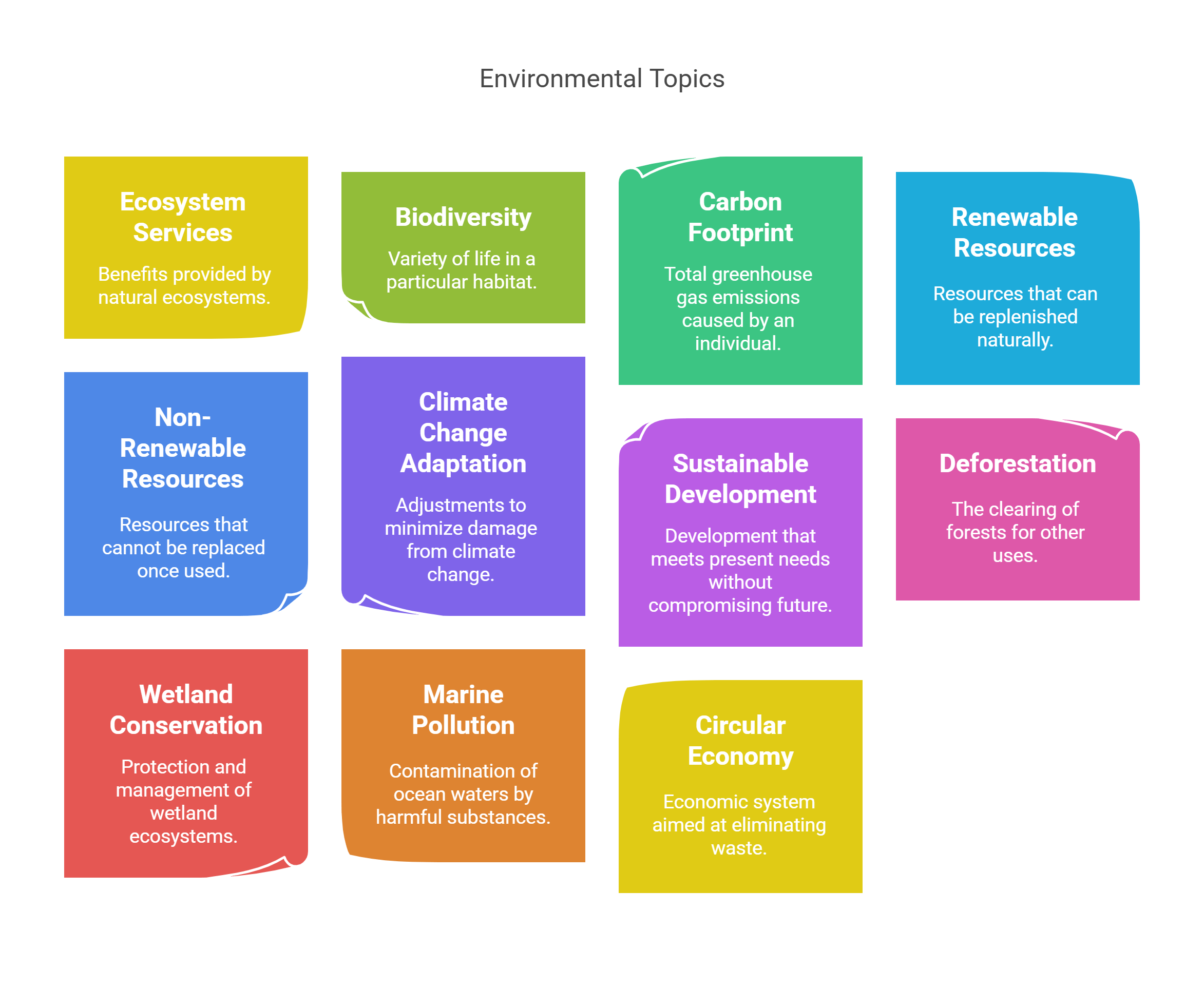
1. Ecosystem Services
Ecosystem services refer to the benefits that humans derive from natural ecosystems. These services are critical for survival and economic development.
- Types of Services:
- Provisioning Services: Products obtained from ecosystems (e.g., food, water, timber).
- Regulating Services: Benefits from ecosystem processes (e.g., climate regulation, pollination).
- Cultural Services: Non-material benefits (e.g., recreation, spiritual value).
- Supporting Services: Processes that sustain ecosystems (e.g., nutrient cycling, soil formation).
📘 Example: Forests provide clean air (regulating), wood (provisioning), and recreational spaces (cultural).
Explained Simply: Ecosystem services are like nature’s gifts, supporting life and human well-being.
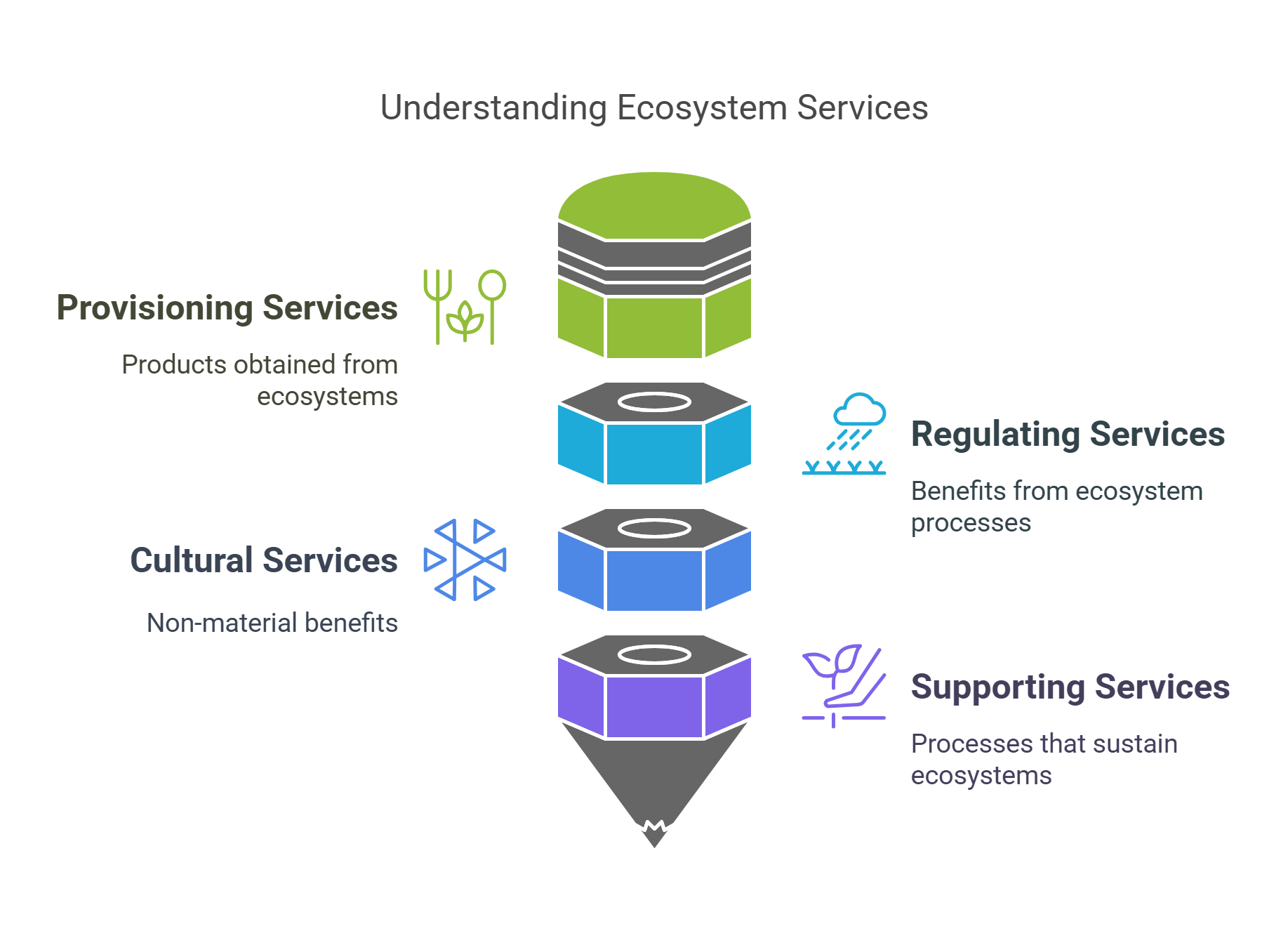
2. Biodiversity
Biodiversity refers to the variety of life on Earth, encompassing species, genetic diversity, and ecosystems. It is vital for ecological stability and resilience.
- Levels of Biodiversity:
- Genetic Diversity: Variation within species.
- Species Diversity: Variety of species in a region.
- Ecosystem Diversity: Range of ecosystems in a given area.
- Threats to Biodiversity:
- Habitat destruction, climate change, pollution, and invasive species.
📘 Example: The Amazon rainforest, home to diverse species, exemplifies high biodiversity.
Explained Simply: Biodiversity is like a safety net for ecosystems, ensuring balance and adaptability.
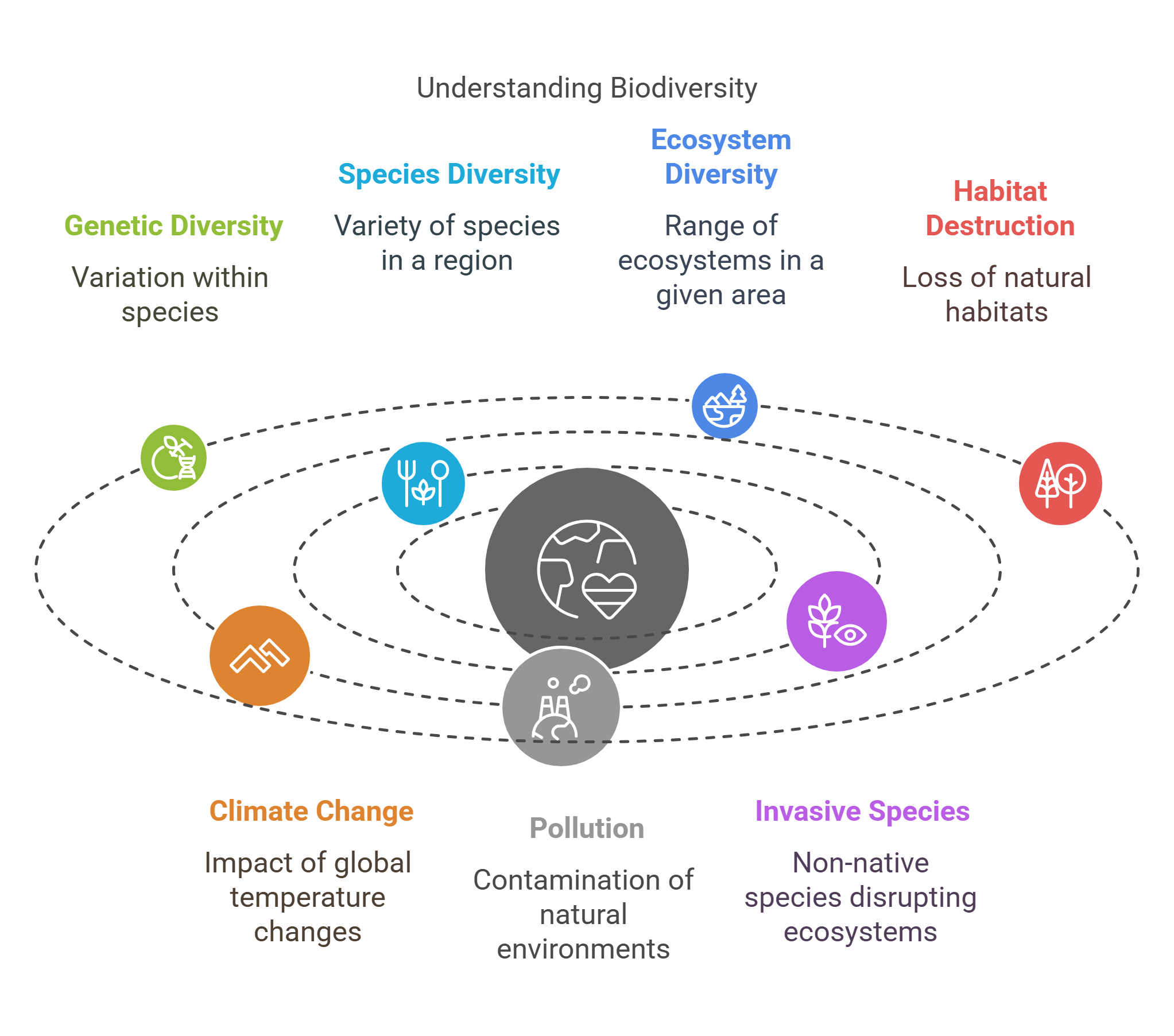
3. Carbon Footprint
A carbon footprint measures the total greenhouse gas emissions caused by an individual, organization, or product. Reducing carbon footprints is essential for mitigating climate change.
- Key Contributors:
- Transportation, energy consumption, deforestation, and industrial activities.
- Reduction Strategies:
- Switching to renewable energy, adopting sustainable practices, and reducing waste.
📘 Example: Using public transport instead of a personal vehicle lowers your carbon footprint.
Explained Simply: A carbon footprint is like your environmental shadow—the smaller it is, the better for the planet.
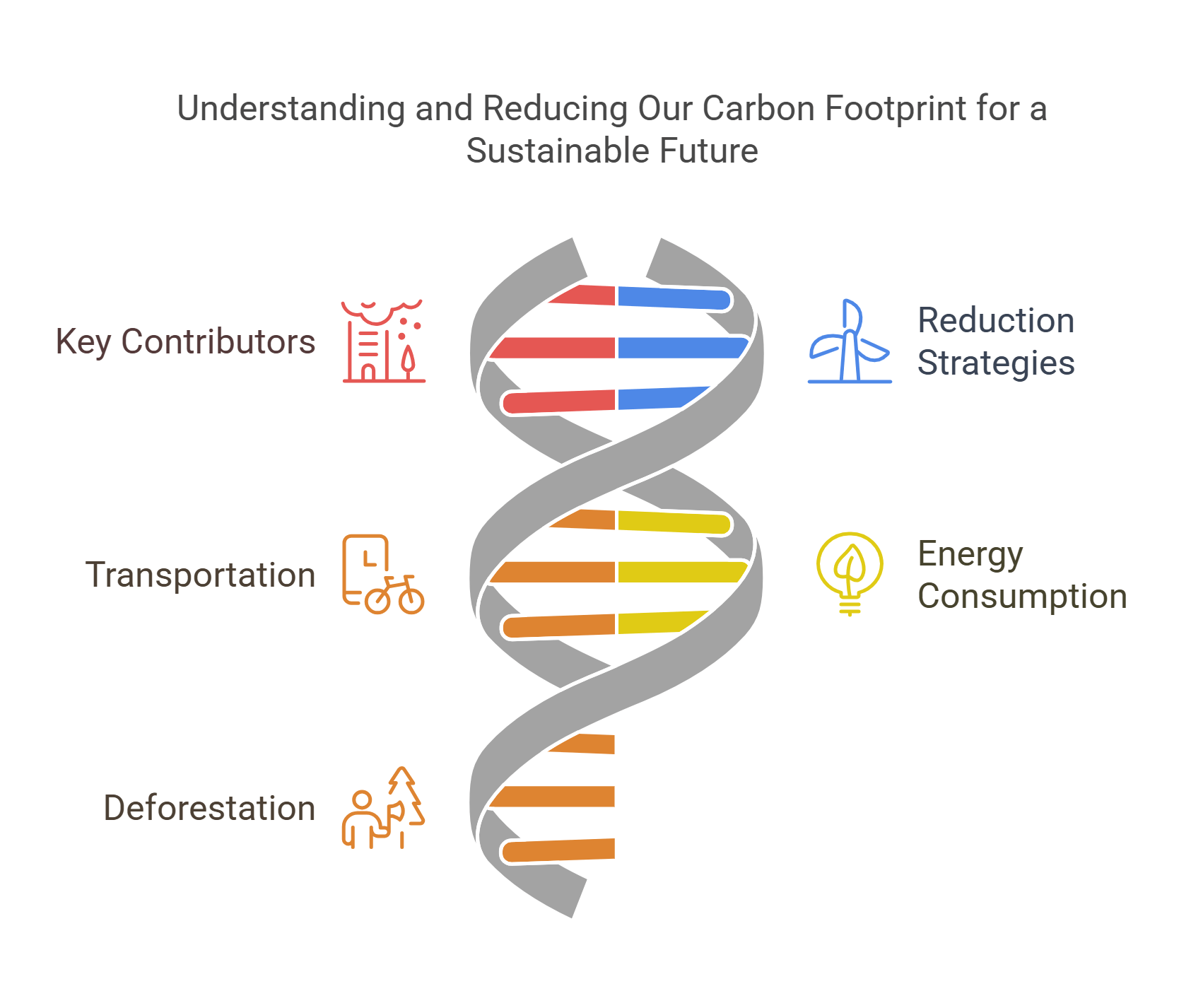
4. Renewable vs. Non-Renewable Resources
Resources are classified based on their availability and ability to regenerate:
- Renewable Resources: Naturally replenished (e.g., solar, wind, water).
- Non-Renewable Resources: Finite and deplete with use (e.g., fossil fuels, minerals).
- Key Challenges:
- Overextraction of renewable resources can make them unsustainable.
- Non-renewable resources drive greenhouse gas emissions.
📘 Example: Hydropower is renewable, while coal is non-renewable.
Explained Simply: Renewable resources are like rechargeable batteries, while non-renewable ones are single-use.
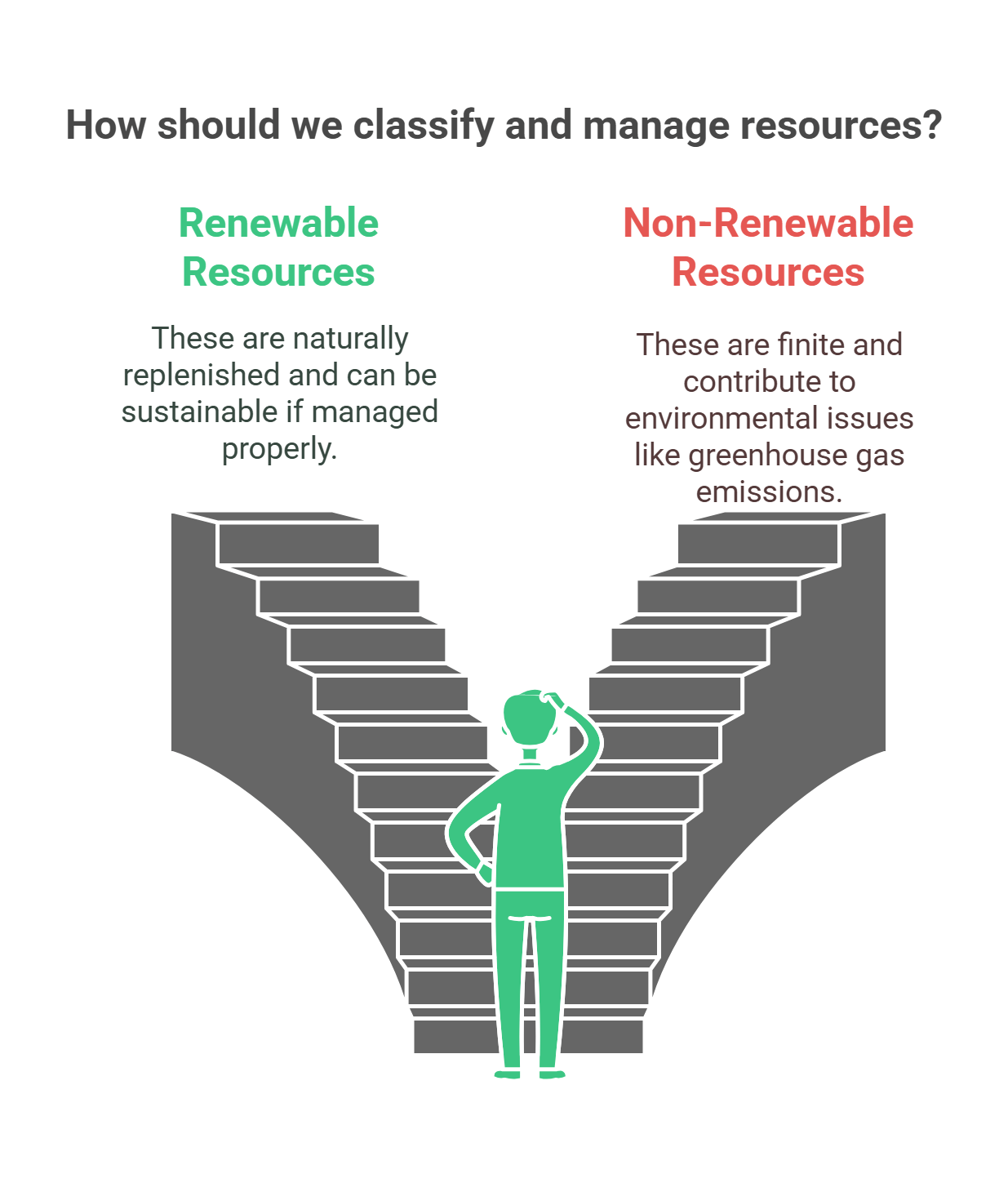
5. Climate Change Adaptation
Climate change adaptation involves strategies to manage the impacts of climate change and build resilience in vulnerable systems.
- Key Approaches:
- Infrastructure: Building flood defenses and resilient buildings.
- Agriculture: Developing drought-resistant crops.
- Policy: Implementing disaster risk reduction measures.
📘 Example: Coastal cities building seawalls to combat rising sea levels.
Explained Simply: Climate change adaptation is like adjusting your sails to navigate stormy seas.
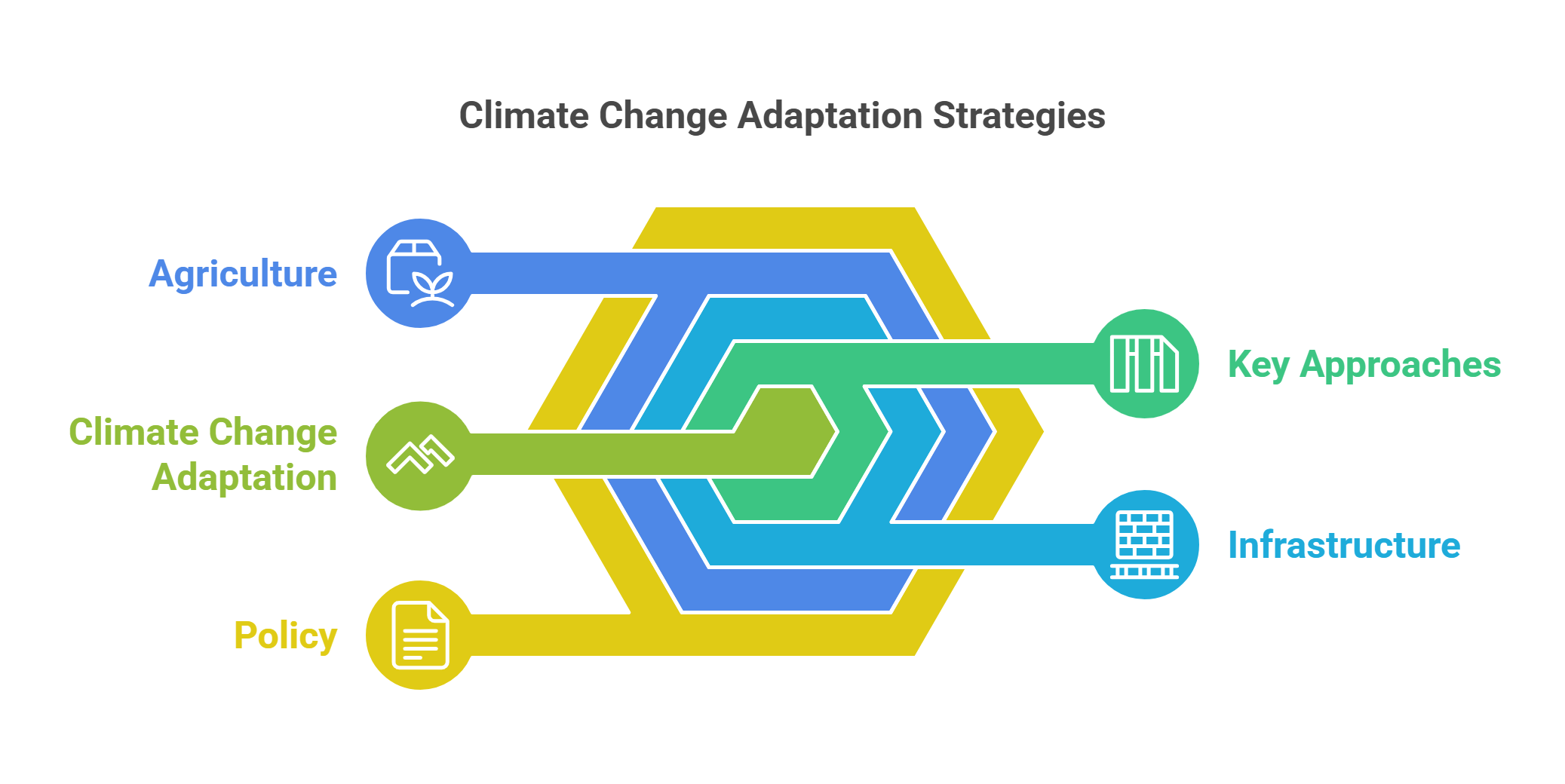
6. Sustainable Development
Sustainable development meets the needs of the present without compromising the ability of future generations to meet their own needs. It integrates economic, social, and environmental goals.
- Key Principles:
- Resource efficiency, social equity, and environmental preservation.
- Applications:
- Transitioning to renewable energy, promoting green infrastructure, and reducing poverty.
📘 Example: Solar energy adoption reduces reliance on fossil fuels while promoting sustainability.
Explained Simply: Sustainable development is like planting seeds today to ensure future harvests.
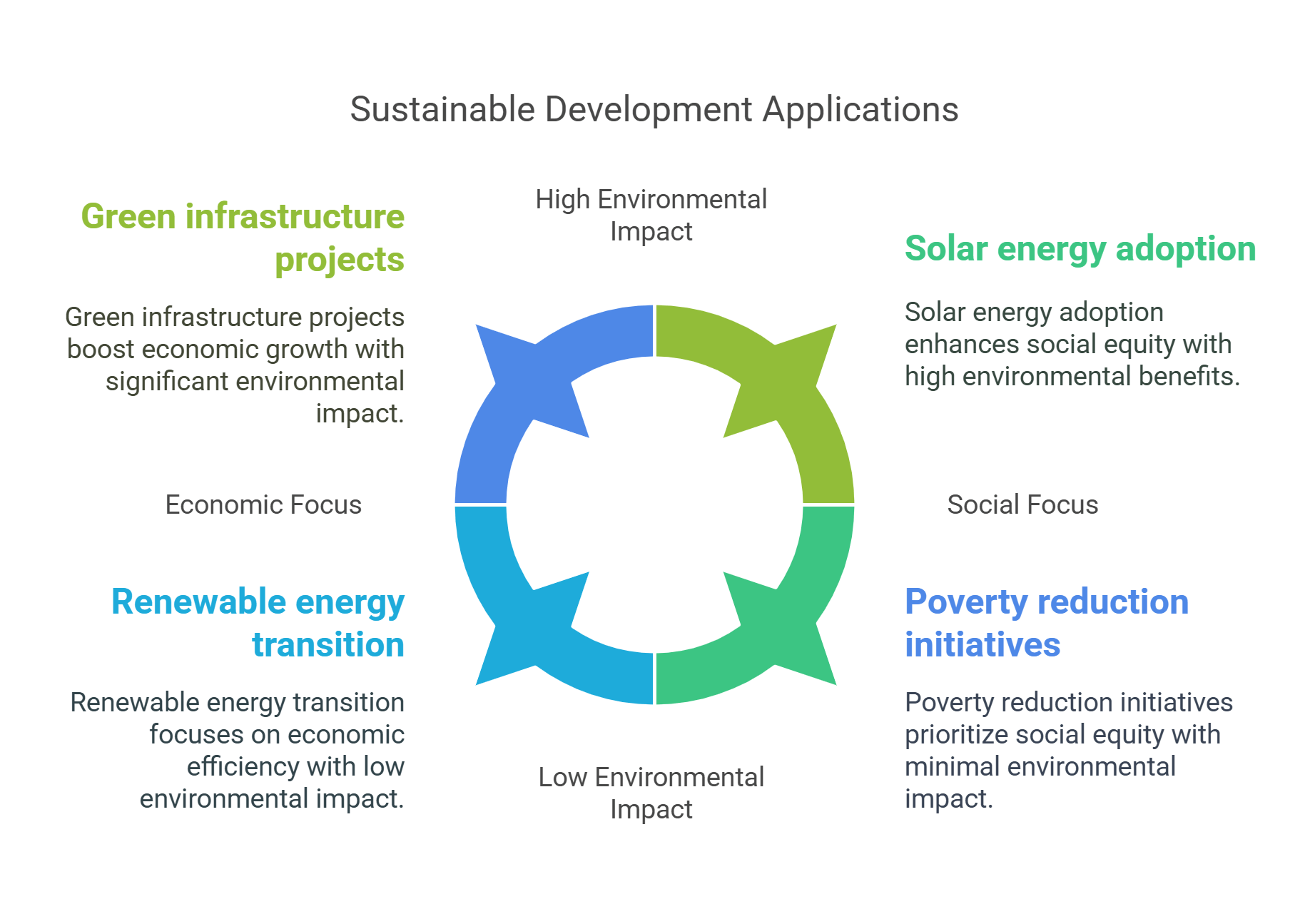
7. Deforestation
Deforestation is the large-scale clearing of forests for agriculture, urbanization, or logging. It disrupts ecosystems and accelerates climate change.
- Key Impacts:
- Loss of biodiversity, increased carbon emissions, and soil erosion.
- Solutions:
- Reforestation, sustainable logging practices, and legal protections for forests.
📘 Example: The deforestation of the Amazon rainforest for cattle ranching threatens global ecological balance.
Explained Simply: Deforestation is like removing the planet’s lungs, reducing its ability to breathe.
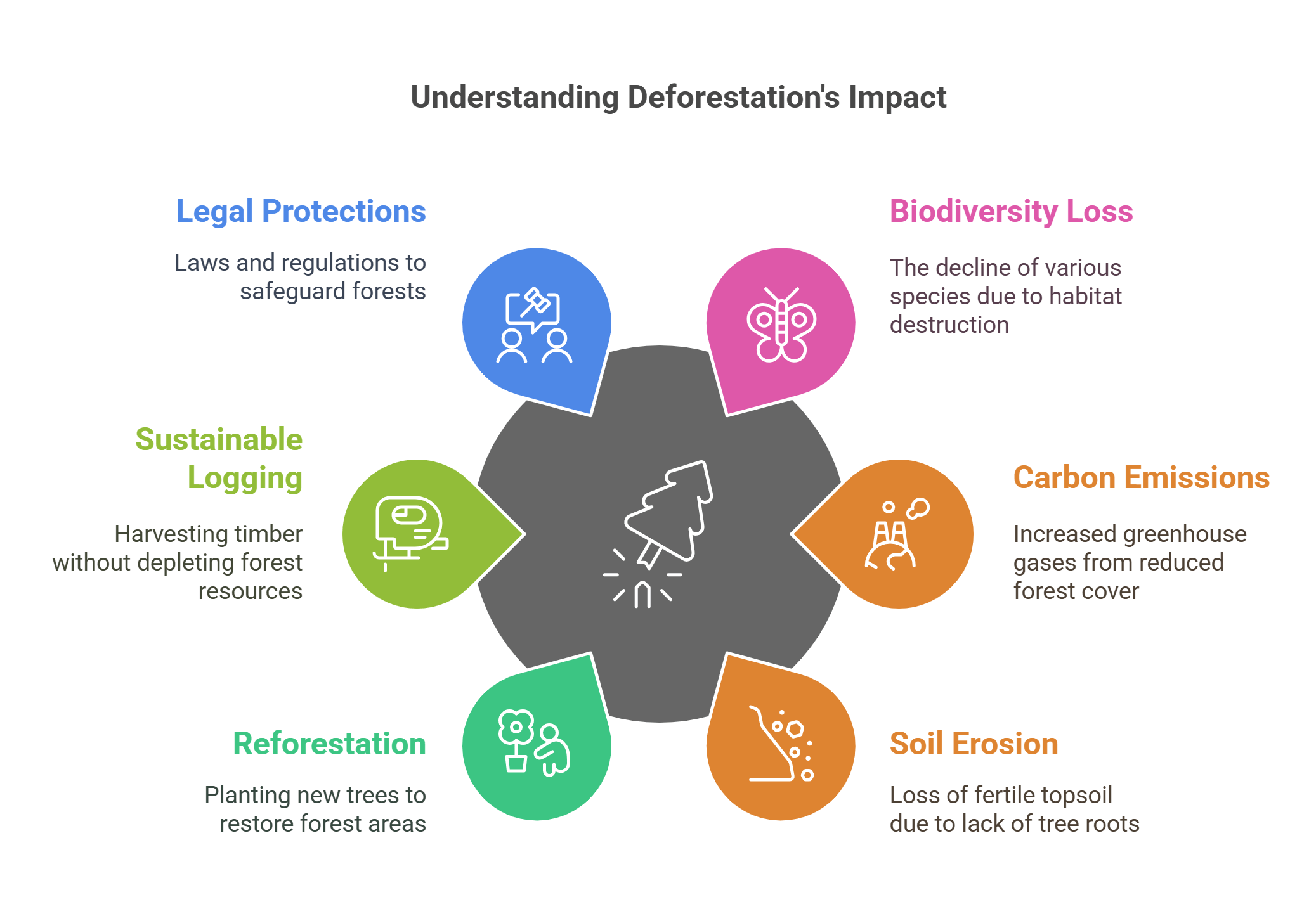
8. Wetland Conservation
Wetlands are ecosystems saturated with water, such as marshes, swamps, and mangroves. They provide critical ecological services.
- Importance:
- Filter pollutants, prevent floods, and support biodiversity.
- Threats:
- Urban development, pollution, and drainage for agriculture.
- Conservation Efforts:
- Ramsar Convention, community-based wetland management.
📘 Example: Protecting mangroves reduces coastal erosion and supports marine life.
Explained Simply: Wetlands are like nature’s kidneys, cleaning and regulating the environment.
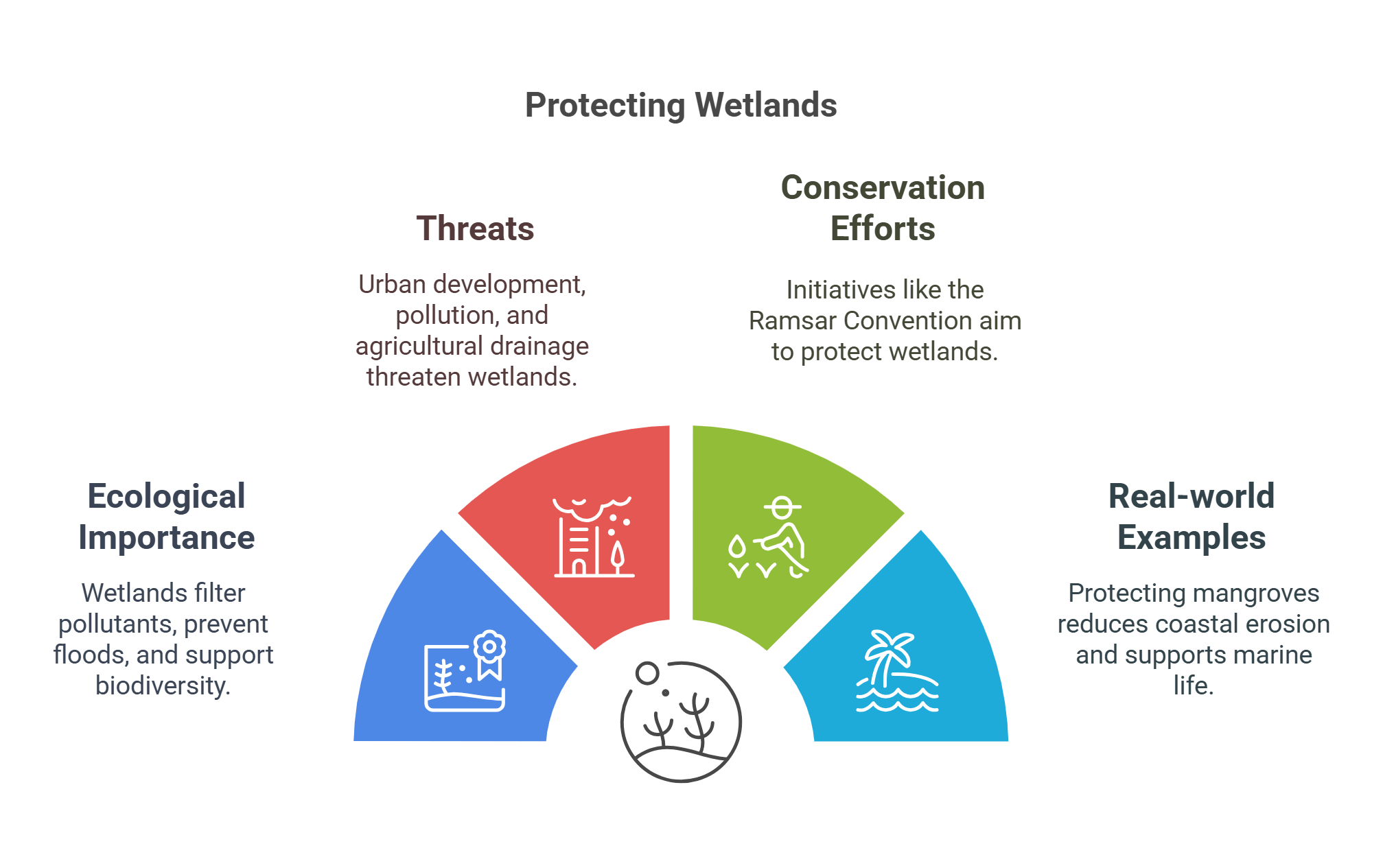
9. Marine Pollution
Marine pollution occurs when harmful substances, such as plastics, chemicals, and oil, enter oceans and disrupt marine ecosystems.
- Major Sources:
- Land-based runoff, oil spills, and shipping waste.
- Key Impacts:
- Threatens marine biodiversity, damages coral reefs, and disrupts food chains.
- Solutions:
- Banning single-use plastics, enforcing anti-pollution laws, and promoting clean energy.
📘 Example: The Great Pacific Garbage Patch is a massive collection of marine plastic debris.
Explained Simply: Marine pollution is like throwing trash into the ocean, harming its fragile ecosystems.
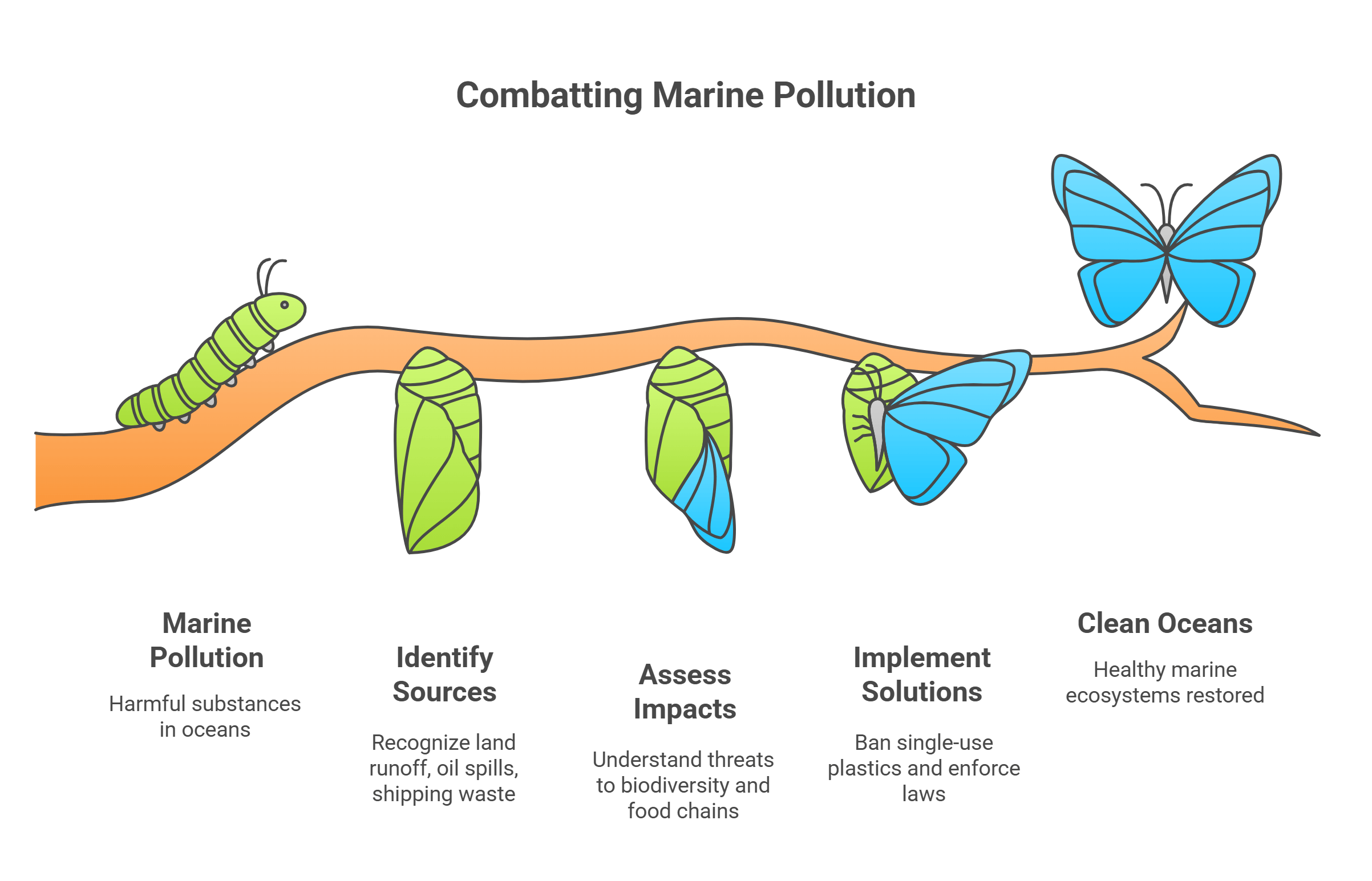
10. Circular Economy
The circular economy aims to eliminate waste by reusing, recycling, and repurposing materials in a closed-loop system. It contrasts with the linear “take-make-dispose” model.
- Key Principles:
- Design for longevity, repairability, and recyclability.
- Minimize resource use and waste.
- Applications:
- Industries adopting cradle-to-cradle manufacturing.
📘 Example: Companies refurbishing old electronics instead of discarding them.
Explained Simply: The circular economy is like turning trash into treasure by keeping resources in use.
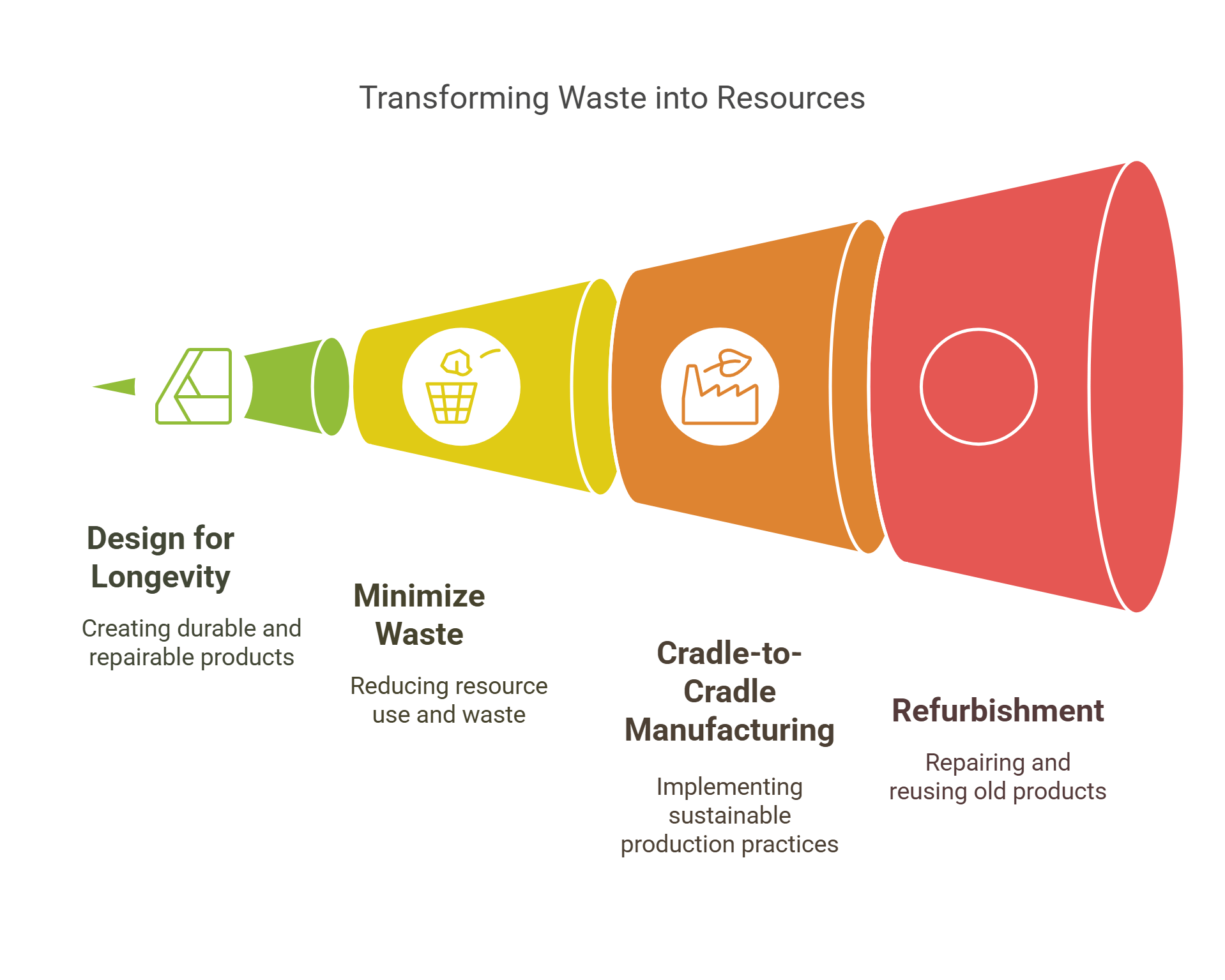
✨ Conclusion
Environmental science offers critical insights into how humans interact with and impact the natural world. By understanding concepts like biodiversity, climate change adaptation, and the circular economy, readers can better analyze RC passages and engage with global ecological challenges. This field emphasizes the need for sustainable solutions to ensure a balanced and resilient planet for future generations.










